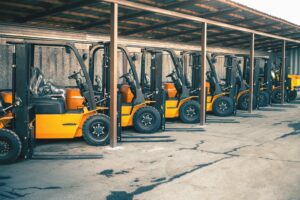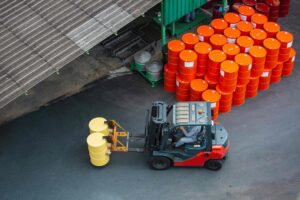 In the United Kingdom, the legal requirements for using forklift trucks in the workplace are governed by several regulations, including the Health and Safety at Work etc. Act 1974 (HSWA), the Provision and Use of Work Equipment Regulations 1998 (PUWER), and the Lifting Operations and Lifting Equipment Regulations 1998 (LOLER). These regulations aim to ensure that forklifts are operated safely and efficiently to minimize the risk of accidents and injuries.
In the United Kingdom, the legal requirements for using forklift trucks in the workplace are governed by several regulations, including the Health and Safety at Work etc. Act 1974 (HSWA), the Provision and Use of Work Equipment Regulations 1998 (PUWER), and the Lifting Operations and Lifting Equipment Regulations 1998 (LOLER). These regulations aim to ensure that forklifts are operated safely and efficiently to minimize the risk of accidents and injuries.
Legal requirements for forklift use in UK workplaces include:
- Operator training: Employers must ensure that all forklift operators have received adequate training and are competent in using the specific type of forklift they will operate.
- Equipment maintenance: Forklift trucks must be regularly inspected, maintained, and kept in good working order, with records of these activities retained.
- Safe operation: Employers must establish safe systems of work for forklift use, including speed limits, pedestrian exclusion zones, and proper loading and unloading procedures.
- Risk assessment: Employers must conduct regular risk assessments to identify potential hazards associated with forklift use and implement appropriate control measures.
Examples of forklift types include:
- Counterbalance forklifts: These are the most common type of forklift, characterized by a counterweight at the rear to balance the load.
- Reach trucks: These forklifts are designed for use in narrow aisles and feature a mast that can extend to reach high shelves.
- Side loaders: These forklifts are designed to pick up long or wide loads from the side, making them suitable for handling timber, piping, or sheet materials.

Dangers and potential accidents associated with forklift use:
- Overturning: Forklifts can tip over if they are overloaded or if loads are lifted too high or unevenly distributed.
- Collisions: Accidents can occur when forklifts collide with other vehicles, objects, or pedestrians due to poor visibility, excessive speed, or operator error.
- Falling loads: Loads can fall from forklifts if they are not properly secured or if the forklift is operated carelessly, causing injuries or damage to property.
- Entrapment: Operators or pedestrians can become trapped between the forklift and another object, leading to serious injuries.
To ensure compliance with legal requirements and maintain a safe work environment, employers should provide comprehensive forklift training, establish clear safety guidelines, and promote a culture of safety awareness among employees.